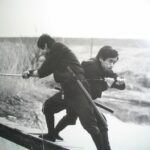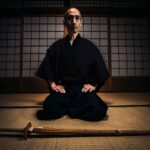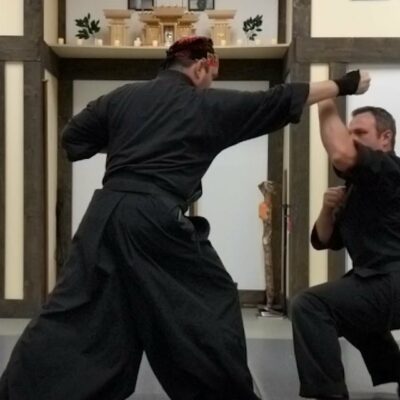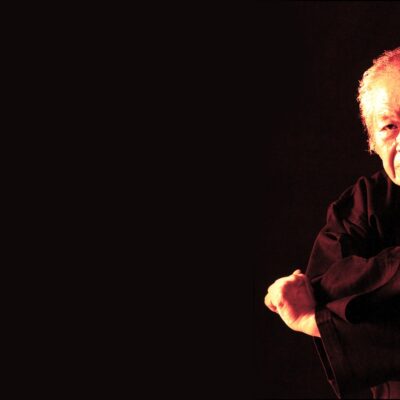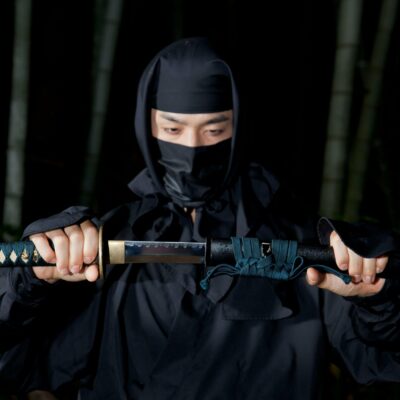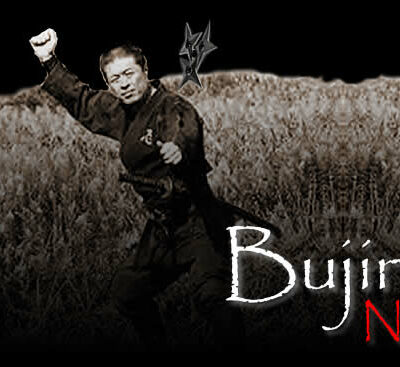As we mention in our article Shuhari, there is a Japanese philosophy to studying a craft. However, this philosophy describes the process of learning, but not necessarily gives direction. In this article we are going to tackle our opinion on progressing through Bujinkan Training.
In the beginning of Bujinkan Training, focus should be placed on learning the Kata. Kata in Japanese means “Form”. The techniques in the scrolls are predefined scenarios designed to illustrate a principle and/or concept. When the various kata are grouped together in their scrolls, the overarching principle is reinforced by the array of concepts and movements. Finally, once an entire school’s techniques are learned, the overall concept of the school comes to light.
As Someya sensei explained in a class the kata “form a foundation.” He continued this analogy: “When you are building a house, you need a strong foundation. If you build on a weak foundation, the house collapses.” The kata then form our technical foundation. Without the proper technique to build upon, our overall structure becomes weak.
This doesn’t mean the kata are perfect. However, they are merely teaching exercises. It’s important to train these principles until they become second nature. That means training Kata extensively.
In terms of Shuhari, this would correlate to the Shu or “Preserve/Copy” Phase.
Henka means “Variation.” Henka may be variations written in the scrolls, or a teacher’s variation. The goal is to break apart the exercise to gain a deeper understanding of the principles in the kata. By applying a particular movement or principle outside of the specified example, we can start to see it more clearly as the details surrounding it become blurred. We also gain a deeper understanding of why a particular kata was designed the way it was.
The best example of this is how Noguchi Sensei often teaches classes. As we said in our previous post on the Martial Arts Instructors of Japan, Noguchi can show as many as 80+ techniques in a single class. However, it always begins with the technique from the scroll. Then, Noguchi will pick out a single element and show different ways of applying it – creating Henka. Eventually, each peice of the original gata has been explored through different henka, before moving onto the next technique.
In terms of Shuhari, this would mark the beginning of the Ha or “Detach” phase.
After gaining deep understanding of principles and honing technique, it’s time to begin stress testing. Randori means “chaos capture”. In Randori a practitioner must deal with unscripted attacks and react. This can range from simply improvising based on a singular static attack, to full on sparring against actively resisting opponents. The level of speed and resistance depends on the level of training.
Randori begins to put things into perspective as theory meets reality. The more panic that is felt, the more technique begins to suffer. Hence one of the most valuable aspects of Randori is learning how to stay calm under pressure and maintain focus. In addition, it gives deeper insight into the realities of combat and how different principles come into play, as well as show the student where they need to train more.
In terms of Shuhari, this is the ending of the Ha phase.
After learning and perfecting technique, gaining deep understanding of principles, and learning how to apply those principles, the practitioner begins to transcend the art itself. This is where Soke is. What he is teaching – methods of taking balance and pain compliance – are not simply mitigating physical attacks. However, he is teaching how to control the mind of the opponent through misdirection and distraction. Rather than simply reacting, he is actively influencing the situation by motivating his opponent to take an inferior position.
On several occassions he has mentioned that he is only teaching to the Shihans. This last time in Japan he exclaimed further: “If you can’t understand the Daishihan, you won’t understand [me].” This is because those select few have reached the level of understanding – they know the gata, they have explored them deeply with henka, and are now developing their own concepts based on the principles found.
This is the “Ri” or transcend phase. The practitioner transcends the martial art, and becomes something unique to themselves.
We can use a variety of analogies to communicate this process in a much more relate-able way. Here are a few:
- Learn the basics of science (i.e Math, Methodology, Physics, Etc.)
- Learn overall principles through variation of method (Different Applications, Studies, Etc.)
- Test in real world (Conduct Experiments, Build Prototypes, Etc.)
- Repeat, until you transcend – make great contribution to science (Albert Einstein, Stephen Hawkings, Thomas Edison, etc.)
- Learn recipes
- Play with recipes – develop ideas
- Have other people try them – use their feed back
- Become a master chef (Gordon Ramsey)
- Copy artwork, learning standard methods
- Play with standard methods (create your “style”)
- Get feedback from people and refine
- Become a master artist of your craft and contribute something new to the arts (Da Vinci, Monet, Picasso, Scorsese, Hitchcock, etc.)
When you start training, focus on the kata. Take what you can from it. And like a good book, revisit them for new insight. This is the platform which everything else is built upon. After you get comfortable, begin experimenting with variation of the details. Understand what is most important of the technique. Then, take those ideas and test them in sparring. After doing this repeatably, you’ll eventually discover yourself, and transcend the art. Just be patient – it’s a life-long pursuit.

